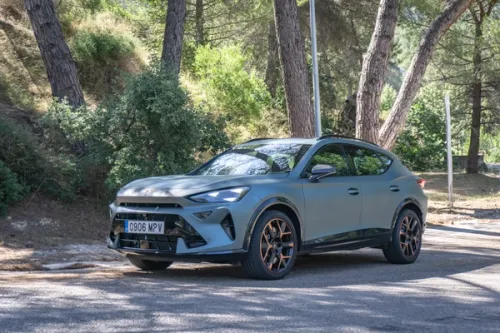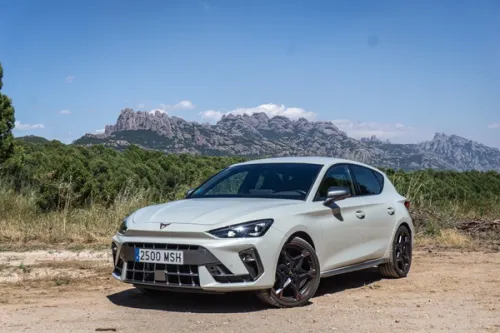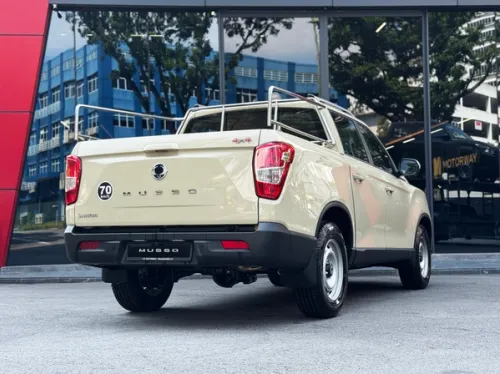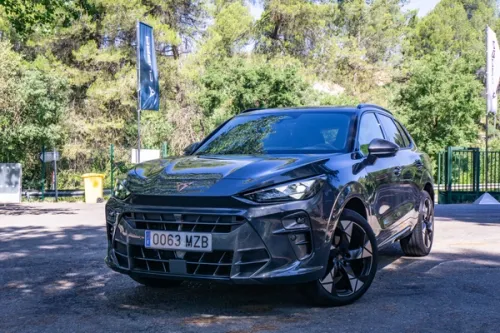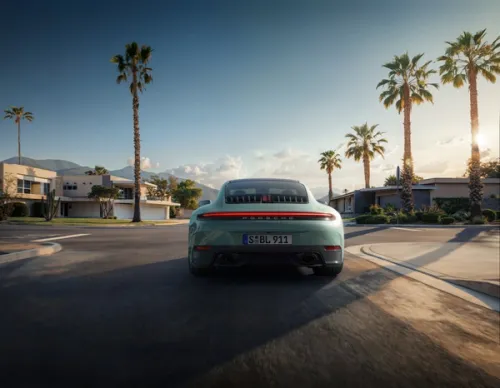Daihatsu Copen

Believe it or not, the bubbly-looking previous generation Daihatsu Copen has been around since 2002, with production running a full 12 years before ending silently in 2012. Called the “Noddy Car” by many familiar with the cartoon character of the same name, the car’s proportions was extremely tiny and made it look cartoon-like.
However, the car had charm in spades and was as cheerful to drive as it was to look at. It was cheap to buy and run too, its 0.66-litre turbocharged engine was extremely frugal, while its road tax was as tiny as its dimensions too.
In late 2014, the second generation Daihatsu Copen was released. Based on the company’s latest “D-Frame” monologue chassis, the new car is still as microscopic as before, in keeping the car in line with Japanese kei car regulations.
The new Copen looks more aggressive than its predecessor, perhaps in a bid to look less bubbly and feminine to appeal to males. The sharp lines, larger air intakes, long blade-like headlight extension, and fiercer looking front fascia bears no resemblance to the rounded shape and soft curves of its predecessor.
Round the back, the theme continues. The round tail lights have been swapped out for more angular and “less-cute” items, while the long blade-like light extensions are also applied. The centrally located twin exhausts have been moved away further to the sides, and oddly, the exhaust tips now face downwards.
The new car however, has a very special party piece up its sleeves. With its newfangled D-frame chassis, the body panels are made from a resin material. Not only do these composite resin panels help keep weight down, they also serve an aesthetic purpose. Interestingly, most of these resin panels (and even head-and-taillights) are easily removable and may be swapped over to change design and colors.
Should one miss the rounded styling of the earlier Copen, it is actually possible to replace the lights and body panels with a factory OEM kit replicating its predecessor’s styling. But of course, this change requires the panels to be purchased from Daihatsu Japan in the first place.
While this is not exactly a new idea (interchangeable plastic body panels saw first commercial success with the first and second generation Smart Fortwo/City Coupe), this helps keep the car attractive to many different buyers, and allows the car to look a refreshing one especially as the lights are changeable too.
Inside, the original Momo steering wheel and shiny ball shifter of the first generation Copen have been given up for more conventional items on the newer car, but there is no doubt the interior is refreshingly unique and more attractive.
The center console adopts a minimalist design, it is only made up of a centrally-positioned air conditioning vent, a large rotary knob, and a simple air conditioning control unit, flanked by 2 large buttons, an engine-start button and the hazard light switch. The plastic carbon-fiber trim on the dash looks convincing enough, and materials in the interior feel durable and hard wearing.
While the car is small, there is more than enough legroom for a 1.76m occupant on either seats, and somehow manages to avoid feeling claustrophobic inside. Moreover, it is easy for the driver to get comfortable as the seats are fairly comfortable and the pedals are well placed.
The chequered carpets are an interesting touch, and are actually standard from the factory.
Removing the top on this little car is a doddle too, simply undo two simple latches, and hold a switch near the handbrake lever to retract the roof. It takes barely 12 seconds for the roof to fold completely. When the roof is stowed, however, most of the boot is occupied, leaving enough room for just a few days’ worth of shopping. Roof up, the boot is apparently big enough for a full sized golf bag, according to Daihatsu’s promotional pictures.
The new Copen is powered by a brand new 658-cc 3 cylinder turbocharged engine, which puts out the same power as before, albeit with less torque, at 63bhp and 92Nm respectively. The upside of the loss in torque is better fuel efficiency and much-improved emission figures.
To drive, the Copen hardly feels slow, and instead feels faster to drive than it does on paper. The car feels sprightly and alive. Overtaking on highways isn’t a big headache, though you wouldn’t want to. You would prefer to take the left lane, comfortably cruising at 70km/h.
The car’s dimnunitive size will make every other vehicle feel too obese, too excessively large, and drivers of the Copen will soon start appreciating the joys of having small cars. Parking is a doddle, and so is maneuvering in tight spaces around town and car parks. Around corners, grip is good and the car feels planted, while the steering is communicative and assuring.
The new Daihatsu Copen is a simple car that oozes with character, and while it may not be everyone’s cuppa, it’s a reasonably priced, honest, and cheerful car.
With the roof down, the car is a joy to drive. It serves its occupants the fun of top-down motoring in spades, along with a simple and straightforward engineering in an affordable package. The new Copen is possibly the cheapest drop-top you can buy new, and is also one of the most cheerful kei cars on local shores.
This article is sponsored by :

Credits:


Get the Best Price for your used car
from 500+ dealers in 24 hours

- Convenient and Hassle-Free
- Consumer Protection
Transparent Process
With No Obligation
